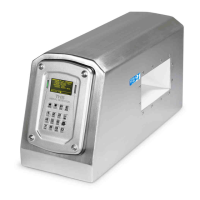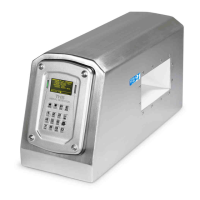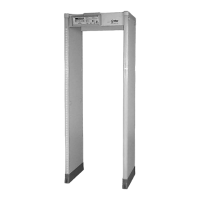Do you have a question about the Ceia THS/21E and is the answer not in the manual?
Specifies minimum installation clearance and site requirements for the system.
Provides general guidelines for mechanical installation of the system.
General rules for electrical installation to ensure compatibility and prevent interference.
Instructions for the mechanical installation of the detection probe.
Guidelines for connecting cables and electrical installations.
Steps for configuring the system, including start-up and preliminary settings.
Explanation of different ejection modes.
Step-by-step guide to verify correct installation and system configuration.
Requirements for settings to comply with CFR21 standards.
Steps for switching on the Metal Detector after checking safety features.
Checklist for safety features like covers, bins, and emergency buttons before operation.
Procedure for checking emergency push buttons and magnetic switches.
Steps for powering on the system, including safety checks and switch operation.
How the display indicates received signal levels and alarm thresholds.
Description of various messages shown on the detector display during operation.
General instructions for using the device.
Procedure for starting and stopping the conveyor belt using control panel buttons.
How to adjust conveyor belt speed using the BS parameter or control keys.
Explanation of automatic stop functions based on self-diagnosis or external signals.
How emergency stop functions are activated and what signals they produce.
Procedure for resetting alarms after metal detection or ejection.
Procedure for resetting system faults.
How to access the programming mode and enter username/password.
How to select and search for products from the stored list.
Procedure for checking sensitivity using reference samples.
Steps for performing sensitivity checks using reference samples.
Detailed procedure for performing a test in standard mode with ferrous samples.
How to perform automatic tests to verify detector functionality.
Description of the automatic test sequence and displayed messages.
List of periodic maintenance operations and their suggested frequency.
Procedures for periodic maintenance, including cleaning.
Troubleshooting guide for common problems with possible causes and solutions.
Verifying the system's compatibility with environmental electromagnetic noise.
Information on the system's self-diagnosis capabilities and actions.
| Brand | Ceia |
|---|---|
| Model | THS/21E |
| Category | Metal Detector |
| Language | English |












